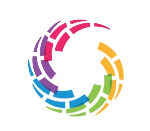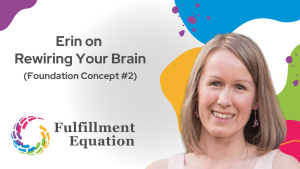
In 1961, US President John F. Kennedy put forward a bold vision that captured the interest and hearts of many. During a speech to Congress, he stated with passion and conviction that the United States “should commit itself to achieving the goal, before this decade is out, of landing a man on the moon and returning him safely to earth”. At the time, this was an audacious dream. The space program was in its infancy, having been conceived in the 1950s. The handful of years leading up to JFK’s speech had been ones full of rocket experimentation, during which most of the rockets never even made it off of the launchpad. The daring vision he set that day definitely pushed the limits of imagination.
Once the call to action was made, scientists began the challenging task of plotting a path from the launch pad on Earth to a landing site on the Moon, and back again. We didn’t have the computing power or instrumentation that we have today, so they used what we knew at the time of the mechanics of two bodies. It involved extremely complex calculations! Consider how both the Earth and the Moon are moving along their own trajectories, one of them rotating quite rapidly. However, thanks to the predictability of these movements, the calculations were made and a course was plotted. There isn’t much in the way of unexpected surprises when it comes to the movement of the Earth and Moon, so in theory it should be smooth sailing for the spacecraft once you’re on the right trajectory.
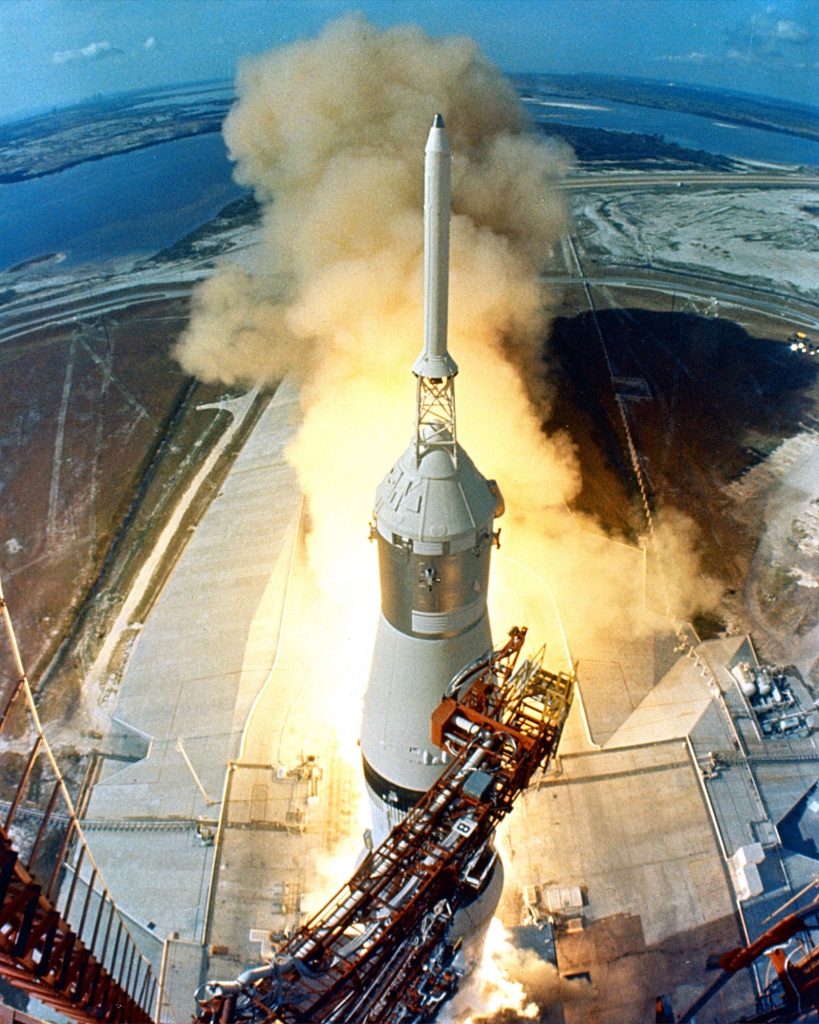
At this point, the vision is in place and the plan is in place. Yet, here’s the interesting part – if no adjustments are made along the way, the rocket is almost certain to miss by a long shot! Throughout the journey, the pilots need to know three things in order to ensure the spacecraft doesn’t land on the edge of a crater on the Moon, or burn up upon reentry into the Earth’s atmosphere or skip off the atmosphere back into space: they must precisely know their navigation (where are we now and where are we going?), guidance (which direction do we need to head to stay on or return to the planned path?), and control (how and when to fire the thrusters to match the planned trajectory). At the time, the systems that were developed to provide this information in-flight were state of the art. Of course, nowadays you carry more computing power in your pocket on your smartphone! Nevertheless, armed with the navigation, guidance and control information, the Apollo crew was able to take the necessary steps to stay on course. As a result, in July 1969, the crew successfully landed on the moon and returned to Earth, realizing the dream of not just a nation, but the world.
All of this is also true for our Personal Strategy. We’ve created a bold vision (Step 1), we’ve identified our pursuits (Step 2), we’ve mapped a course of action (Step 3) and now it’s time to check in on occasion to reflect on where we’re at and make adjustments if needed (Step 4). We’ll do this by assessing our vision, validating our strategy and refreshing our action plan.
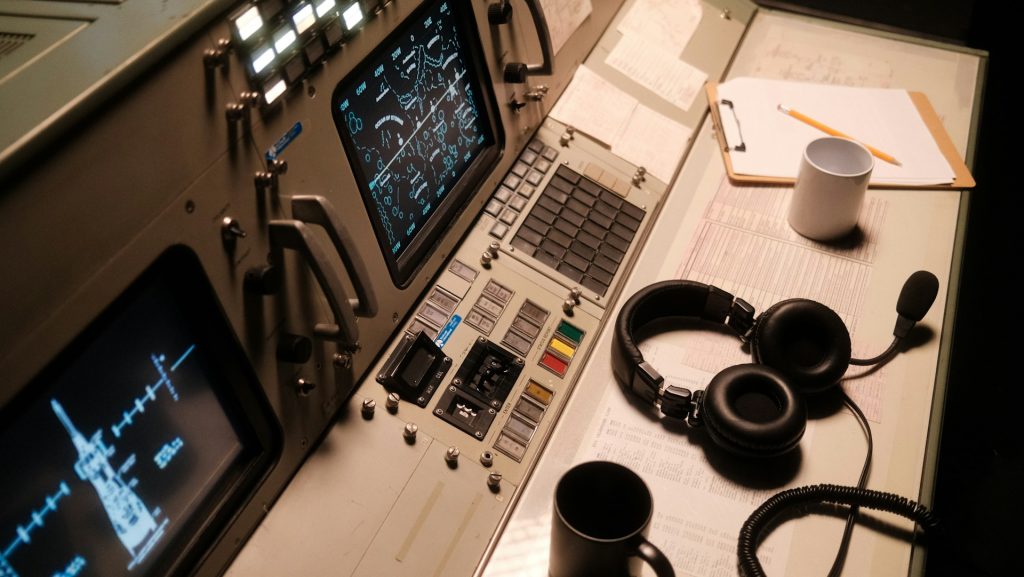
Vision Assessment (Your Navigation System)
You may recall that at the beginning of Step 2, after we had solidified a vision, but before we created our strategy model, we did a benchmark vision assessment (link). We had wanted to know, where do we currently stand relative to our vision of the life of our future self? In other words, we wanted to know our navigation – where are we now in relation to where we are going. This helped us understand which vision sentences are small steps and which ones are giant leaps, giving us insight into where to focus.
At certain points in your journey to build future fulfillment, it’s useful to check in by repeating this assessment exercise. It’s a chance to reflect and reset your navigation! It allows you the opportunity to re-energize by appreciating the progress you’re making, while at the same time highlighting the areas where you might need to bring additional focus.
You may be wondering, how often should I do the assessment? The answer is as often as you need to. I tend to follow my heart when it comes to the timing. Perhaps you’re finding yourself feeling a little lost or disconnected from your why. That’s a good cue that it’s assessment time! Do it when you feel like you need to re-centre, re-set and re-energize. Looking back, I can see that my heart led me to do an assessment about once a year. If you’d prefer to schedule it proactively, that’s fine too! The Fulfillment Equation processes are here as guides, it’s yours to experiment with and find what works best for you.
When you’re ready, here’s how to do it. Write down your 7-10 vision sentences vertically on a piece of paper, then create a column next to them that you will use for your rating. If you have room for additional columns on your benchmark assessment, that’s great! In this case, you may want to cover up your benchmark ratings while you do your new assessment so as to not influence your thinking.
Just as we did with the benchmark assessment, start with the first sentence – read it aloud and picture it in your mind. How true is that sentence for you currently? Give it a rating between 1-10, where 1 is “I couldn’t possibly be any further away from that than I am right now” and 10 is “That is 100% true for me / I’ve reached the destination”. Chances are, you’ll likely be somewhere in the middle of those two extremes. Jot down a couple of bullets beside each rating to capture why you rated it the way you did. What’s going well? Where do you feel a gap? Continue to move through each sentence, one at a time – visualizing it, feeling how much of it is true for you now, applying a rating and making a couple of notes – until you have done so for each sentence.
Uncover the benchmark or other previous assessment ratings for comparison. What’s changed? In some cases, you may be able to draw a line between the action you’re taking and improvements in how close you feel to realizing that vision sentence. That always feels good! Take a moment to appreciate the positive change you’re making in your own life in that area.
Realistically, our paths from where we started to where we want to be are rarely linear. There are some things we can control and many things we can’t. We also don’t have perfect information on everything when we start out, and the growth part of the journey is in the learning we do along the way. While initially disappointing, it’s absolutely okay to take a step backward on some ratings. We need to remember that the rating exercise in your vision assessment is not achievement-oriented and judgemental (success/failure). Instead, the purpose is informational, like the readings on the dashboard of your car. Having a meter run low is a flag for your attention, not an indication that you’re a terrible driver!

In the case where you end up with a vision sentence rating that is LOWER than you had given it before, this could be for a number of reasons. One thing to consider is that you are now making the assessment from a different perspective. This is actually indicative of growth! Let me give you an example. Every Monday at work we have a team meeting with a set agenda and at the end of the hour we give the meeting a rating based on how effective, efficient and valuable we think it was. Our team was doing pretty well with the meetings and we would regularly rate ourselves as 9/10. Then one day, we decided to shadow a slightly larger company that had been using the same methodology as us for longer. They were kind enough to let us watch their meeting in action. Wow! We had thought we were doing well, but after the hour-long observation we realized that we had lots of room for improvement, and we returned to our meetings armed with some solid ideas for changes. Guess what we rated the first meeting we had after our observation? 7.5/10. Had we become worse off overnight? Of course not! We had just expanded our perspective and were now evaluating from a different vantage point. This is a good thing! If anything, we were actually getting better. The point is that a decrease in your rating could be a flag for your attention, or it could also reflect that you now have more information and context than you did before. It could mean that you now have a more accurate rating.
We’re going to use the results of our vision assessment in a moment when we review our personal strategy, but let’s do one more thing before we move on. Lift up and re-read all of your vision sentences. These sentences are core to your values and your why, so they really shouldn’t need to change much. Yet, once in a while, we may want to make some tweaks in the long run. Ask yourself: Do they all still resonate with you? Is there anything that now seems glaringly absent that you want to add? Is there anything that doesn’t feel right to you anymore that you want to remove? Is there anything that you want to keep, but adjust a little to better reflect what it is you’re trying to capture? Feel free to take a minute to make some minor refinements before moving on to your personal strategy.
Personal Strategy Review (Your Guidance System)
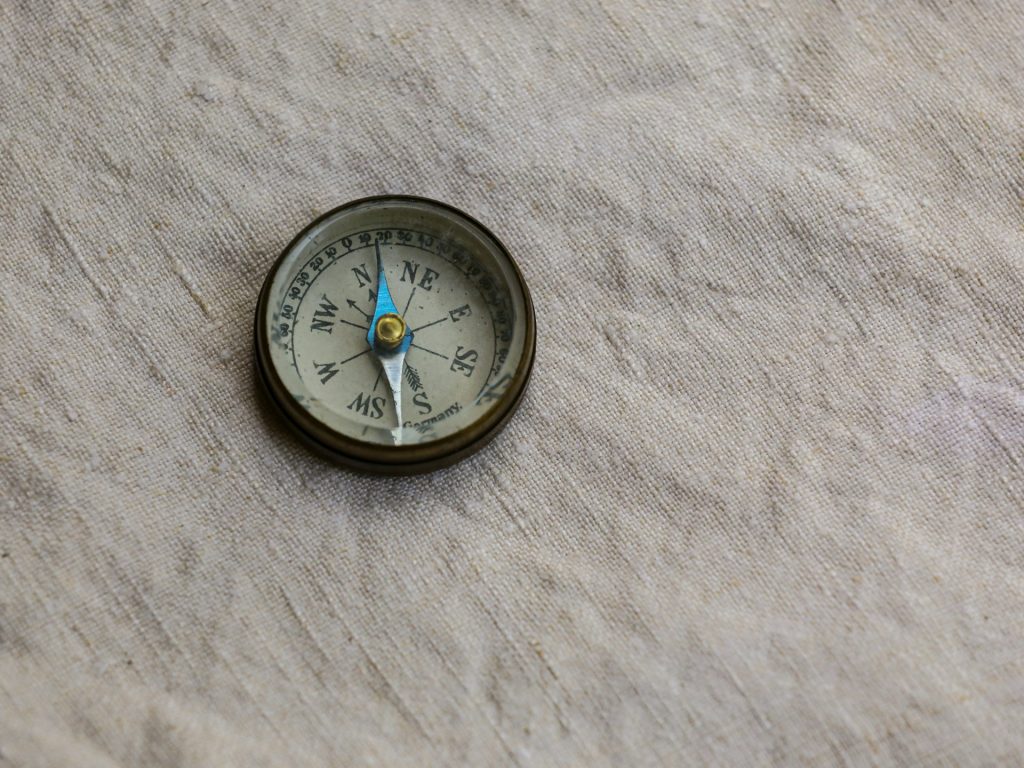
Your Personal Strategy Model is like your map. Our vision tells us where we want to be and our strategy model tells us how we’re going to get there. We designed the pillars and priorities in our model to represent a direct path to our vision. It made sense when we created it, so let’s make sure it still makes sense. After all, as time passes things can change within ourselves or our environment that may shift our perspective. What you thought was a priority may become more important or less important. You may have new information that you didn’t have when you created the strategy. This is an opportunity to make a few tweaks to your route so that you can stay on course toward the outcomes you are seeking.
Start by reviewing the pillars and priorities in your model. Does it still make sense to you? Is it motivating? Now, reference back to your vision assessment. What are vision sentences that you’re feeling furthest from (lowest rating)? Are these areas effectively represented in your model? Look at the comments you made describing why you rated the vision sentences as you did. Are there clues in your reflection that might suggest a change you may want to make to your pillars or priorities? Similar to the vision, the personal strategy model is relatively long-term in nature, so it would be rare for it to change drastically, however expect to make small refinements along the way as time passes.
Finally, review the ratings and assessment notes for the remaining vision sentences. Do you have confidence that your pillars and priorities will get you there? Has anything changed? Make any remaining refinements to your strategy model before moving on to your Action Plan.
Action Plan Refresh (Your Control System)

As discussed in Step 3 (link), you’ll want to find a rhythm for refreshing your action plan that works for you, whether it be quarterly, semi-annually or annually. Engaging in a vision assessment and personal strategy review is the natural precursor to updating your action plan. Just as our spacecraft control tells us how and when to fire the thrusters to stay on course, our action plan helps us define the immediate next steps we are taking and the behaviours we need to embrace in order to stay on track. It is a powerful way to translate the dreams in our head and on paper into the practices we engage in on a daily basis. Our commitment to the behaviours is how we grow into the person we want to be. Refreshing our action plan after a vision assessment helps us to reconnect with our why and re-energize us to move forward. Check out the guide on Step 3: Putting Your Strategy Into Action for prompts that will walk you through refreshing your action plan. It is the same approach that you used the first time you made one.
Straddling Present and Future Fulfillment at the Same Time

Now that we’re at the end of the last step in our Personal Strategy work, I want to circle back to the important message I shared at the beginning of the first step. I can’t emphasize this part enough. If this were a course and I was the teacher, this is the point in the class where I would slow down my speech and repeat the sentence twice in order to let it sink in: Be careful not to let your pursuit of future fulfillment take away from your fulfillment in the present.
It is entirely possible to stay grounded in your present fulfillment and a place of gratitude, while simultaneously working towards changes in your life that will lead you to your dreams of future fulfillment. This is the notion of being both present and future-oriented at the same time. But it’s not easy. The Personal Strategy work can appeal to our achievement-oriented nature and we risk getting pulled into a place of fixation and “not good enough”. This is dangerous territory because if it happens, it can actually undermine our overall fulfillment.
One thing that can help us stay grounded is remembering that our goals and ambitions are meaningless without our ability to thrive in the present. If you’ve ever experienced major life losses, you’ll know exactly what I’m talking about. In an instant, everything you were fixated on can be rendered irrelevant and you’re left yearning for what you already had. If you find the activities of building future fulfillment are taking you to a place where you’re having trouble living in the moment and enjoying what you have in the present, then that’s a flag that you need to pull back and re-centre.
Another way to think about it is to remember that our Personal Strategy work is meant to support our growth and development. It’s striving for an enhancement of our present life and our present selves, not a replacement. As I mentioned earlier, this is about moving towards, not running away from. When you’re moving towards, you have a clear direction. When you’re running away from, you could go in a million different ways, many of which may be less desirable.
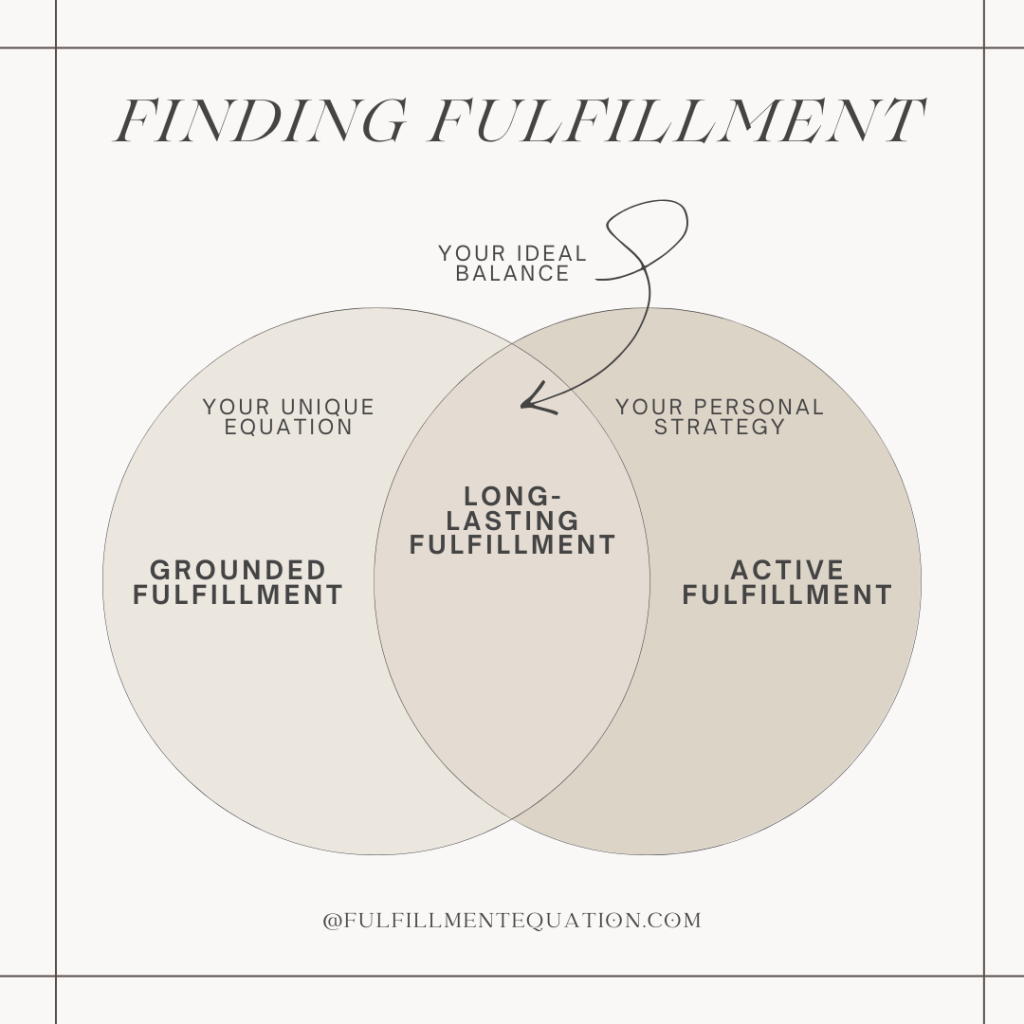
Above all, remember that building future fulfillment through your Personal Strategy is supposed to be fun! It’s an enjoyable complement to building present fulfillment through your Unique Equation. When working in balance, the two fulfillment practices will augment and fuel each other. In one direction, working towards your dreams can give you a sense of purpose, which is a key foundation for finding fulfillment in the present. In the other direction, the more grounded you are in where you are now, the more energy you will have for pursuing your desired future. When you discover that ideal balance, that beautiful equilibrium in being both present and future oriented at the same time, that’s the sweet spot where you’ll find long-lasting fulfillment.

